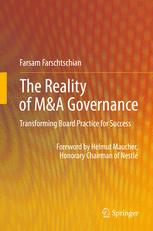

Most ebook files are in PDF format, so you can easily read them using various software such as Foxit Reader or directly on the Google Chrome browser.
Some ebook files are released by publishers in other formats such as .awz, .mobi, .epub, .fb2, etc. You may need to install specific software to read these formats on mobile/PC, such as Calibre.
Please read the tutorial at this link: https://ebookbell.com/faq
We offer FREE conversion to the popular formats you request; however, this may take some time. Therefore, right after payment, please email us, and we will try to provide the service as quickly as possible.
For some exceptional file formats or broken links (if any), please refrain from opening any disputes. Instead, email us first, and we will try to assist within a maximum of 6 hours.
EbookBell Team

4.7
86 reviewsEmpirical research shows that two thirds – some claim even four fifths – of all acquisitions fail. Bad acquisitions can spell disaster for a company, but if successful, they can lead to healthy growth, enhanced competitiveness and a world market position. Despite the vast amount of academic and practical research on M&A, there are still no adequate theories to explain this continued trend of failure. In fact, although success factors have been broadly researched and are well known, most work still concentrates on them without concomitantly touching upon the necessary governance structure which enables their effective deployment. This is crucial. In order to determine what constitutes an effective board and governance structure, extensive qualitative fieldwork was carried out through discussions with some of the most renowned international CEOs and Chairmen. From this, two in-depth analyses of prominent cases are made, one of extraordinary success and the other of integral failure. The business leaders' management approaches are scrutinised, revealing significant differences between what worked and what did not, and recommendations are derived for improved corporate governance. The author's conclusions sharply illustrate the limits and challenge the inadequacies of current business practice, revealing gaps between mainstream theory and the reality of the boardroom. Due to his innovative approach, the study is praised by practitioners for itsadditions to strategic management understanding and its provision of effective tools for boards and managers.